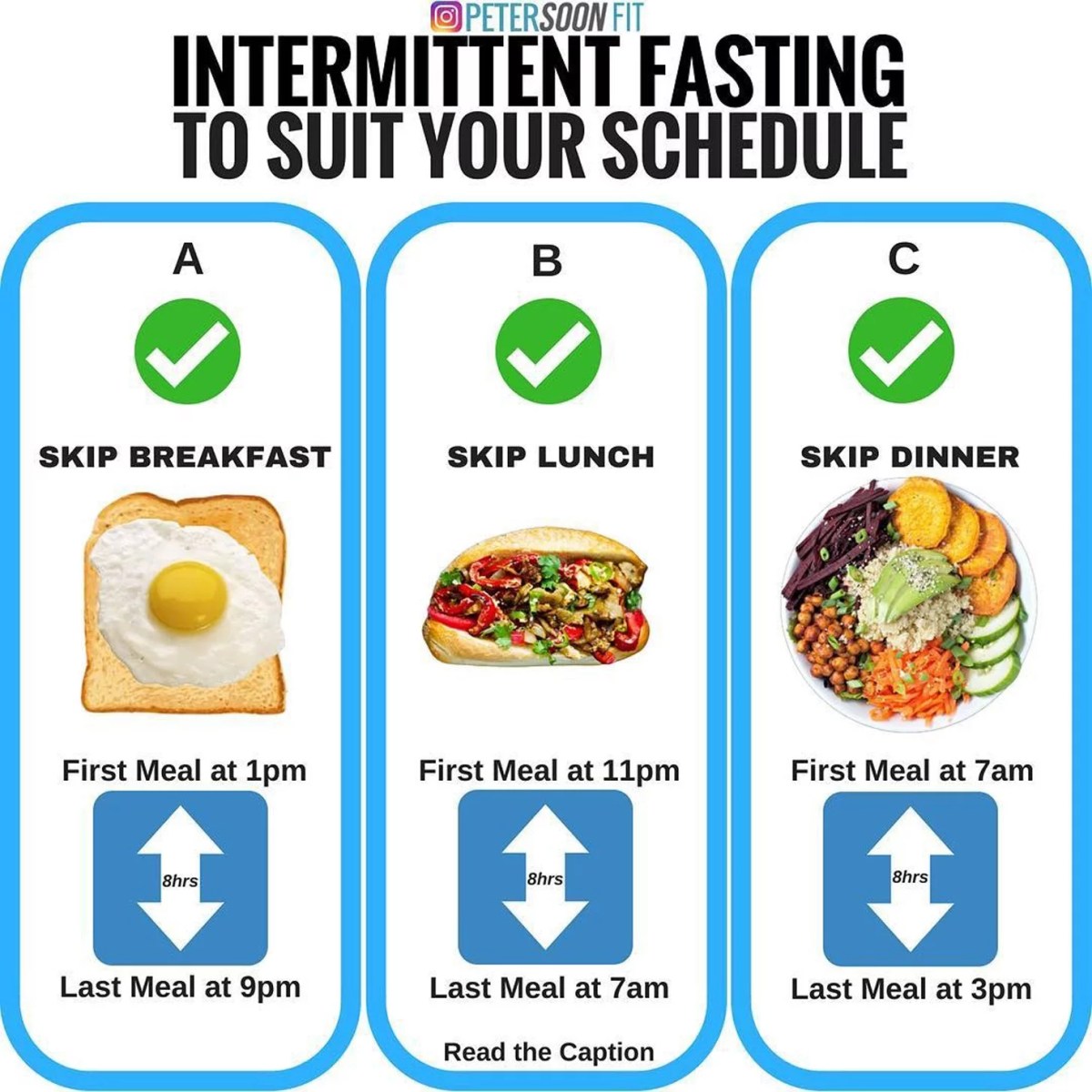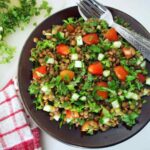Embark on a culinary journey where vibrant vegetarian dishes meet the mindful practice of intermittent fasting. Imagine savoring flavorful, high-protein breakfasts that jumpstart your day, followed by satisfying fiber-rich lunches that keep you full and energized. Picture hearty, easily digestible dinners that end your fasting window with a flourish of taste and nutrition. This guide unveils a world of delicious vegetarian recipes, meticulously crafted to seamlessly integrate with your intermittent fasting plan, offering a balanced approach to healthy eating and mindful living. Each recipe is designed to not only nourish your body but also tantalize your taste buds, proving that healthy eating can be both satisfying and enjoyable.
From quick and easy snacks to complete 7-day meal plans, we’ll explore the art of preparing vegetarian meals optimized for intermittent fasting. Learn how to balance macronutrients, maximize satiety, and avoid common pitfalls. We’ll delve into the benefits of incorporating legumes, whole grains, and other nutrient-rich ingredients, ensuring your intermittent fasting journey is not only sustainable but also a delicious adventure in healthy eating.
Satisfying Vegetarian Lunch Ideas for Intermittent Fasting
Choosing the right foods during your eating window is crucial for successful intermittent fasting. High-fiber vegetarian meals are particularly beneficial as they promote satiety, preventing hunger pangs and cravings throughout your fasting period. These meals provide sustained energy and essential nutrients without spiking blood sugar levels.
High-Fiber Vegetarian Lunch Recipes for Intermittent Fasting
The following recipes are designed to be both delicious and filling, keeping you satisfied until your next eating window. Each recipe emphasizes whole grains and legumes, providing a significant fiber boost to support your intermittent fasting goals.
- Lentil Soup with Whole Wheat Bread:
- Ingredients: 1 cup red lentils, 4 cups vegetable broth, 1 onion (chopped), 2 carrots (chopped), 2 celery stalks (chopped), 1 tsp cumin, 1/2 tsp turmeric, salt and pepper to taste, 2 slices whole wheat bread.
- Steps: Sauté onion, carrots, and celery until softened. Add lentils, broth, cumin, and turmeric. Simmer until lentils are tender (about 20-25 minutes). Season with salt and pepper. Serve with whole wheat bread.
- Quinoa Salad with Roasted Vegetables:
- Ingredients: 1 cup quinoa, 1 cup broccoli florets, 1 cup bell peppers (chopped), 1/2 cup chickpeas, 2 tbsp olive oil, lemon juice, salt, pepper, herbs (parsley, oregano).
- Steps: Roast broccoli and bell peppers until tender. Cook quinoa according to package directions. Combine cooked quinoa, roasted vegetables, chickpeas, olive oil, lemon juice, salt, pepper, and herbs. Mix well.
- Black Bean Burgers on Whole Wheat Buns:
- Ingredients: 1 can black beans (drained and rinsed), 1/2 cup cooked brown rice, 1/4 cup chopped onion, 1/4 cup chopped bell pepper, 1/4 cup breadcrumbs, 1 tbsp chili powder, salt and pepper to taste, whole wheat buns.
- Steps: Mash black beans. Combine with rice, onion, bell pepper, breadcrumbs, chili powder, salt, and pepper. Form into patties and cook in a pan or bake until heated through. Serve on whole wheat buns.
- Chickpea and Vegetable Curry with Brown Rice:
- Ingredients: 1 can chickpeas (drained and rinsed), 1 onion (chopped), 2 cloves garlic (minced), 1 inch ginger (grated), 1 cup mixed vegetables (peas, carrots, cauliflower), 1 tbsp curry powder, coconut milk, brown rice.
- Steps: Sauté onion, garlic, and ginger until fragrant. Add curry powder and cook for 1 minute. Add chickpeas and vegetables. Stir in coconut milk and simmer until vegetables are tender. Serve over brown rice.
- Vegetarian Chili with Sweet Potato and Kidney Beans:
- Ingredients: 1 large sweet potato (diced), 1 can kidney beans (drained and rinsed), 1 onion (chopped), 1 bell pepper (chopped), 1 tbsp chili powder, 1 tsp cumin, vegetable broth.
- Steps: Sauté onion and bell pepper until softened. Add sweet potato, kidney beans, chili powder, cumin, and vegetable broth. Simmer until sweet potato is tender (about 20-25 minutes).
Benefits of Legumes and Whole Grains in Vegetarian Intermittent Fasting Meals
Legumes and whole grains are nutritional powerhouses, particularly beneficial during intermittent fasting. Legumes, such as lentils, chickpeas, and kidney beans, are excellent sources of protein and fiber, contributing to sustained satiety and preventing blood sugar spikes. Whole grains, like quinoa and brown rice, offer complex carbohydrates for sustained energy release and are rich in fiber, further enhancing feelings of fullness. The combination of protein and fiber in these foods helps regulate blood sugar levels and prevents energy crashes, making them ideal for maintaining energy and focus during your eating window.
Macronutrient Comparison of Vegetarian Lunch Recipes
The following table compares the approximate calorie and macronutrient content of the five lunch recipes. These values are estimates and can vary based on specific ingredients and portion sizes. The information provided is intended to illustrate the suitability of these recipes for different fasting windows and individual caloric needs.
| Recipe | Calories (approx.) | Protein (g) | Carbohydrates (g) | Fiber (g) | Fat (g) |
|---|---|---|---|---|---|
| Lentil Soup with Whole Wheat Bread | 450 | 20 | 70 | 15 | 10 |
| Quinoa Salad with Roasted Vegetables | 400 | 15 | 60 | 12 | 15 |
| Black Bean Burgers on Whole Wheat Buns | 500 | 25 | 75 | 18 | 12 |
| Chickpea and Vegetable Curry with Brown Rice | 480 | 22 | 78 | 16 | 10 |
| Vegetarian Chili with Sweet Potato and Kidney Beans | 420 | 18 | 70 | 14 | 8 |
Hearty Vegetarian Dinner Recipes for Intermittent Fasting

Choosing the right dinner during your intermittent fasting eating window is crucial for satiety and nutrient absorption. These recipes prioritize easily digestible ingredients and a balanced macronutrient profile to support your fasting goals and overall well-being. They’re designed to be both satisfying and nourishing, leaving you feeling full and energized without the digestive discomfort that can sometimes accompany heavier meals after a fast.
Macronutrient Balance in Vegetarian Intermittent Fasting Dinners
Balancing macronutrients—protein, carbohydrates, and fats—is essential for a successful vegetarian intermittent fasting plan. Protein keeps you feeling full and supports muscle mass; complex carbohydrates provide sustained energy; and healthy fats aid in nutrient absorption and satiety. A well-balanced meal prevents blood sugar spikes and crashes, contributing to consistent energy levels throughout your eating window. For example, a lentil stew (rich in protein and fiber), paired with a small portion of quinoa (complex carbohydrates) and a drizzle of olive oil (healthy fats), provides a balanced and satisfying meal.
Three Hearty Vegetarian Dinner Recipes
These recipes offer a variety of flavors and textures while adhering to the principles of easy digestibility and macronutrient balance.
Creamy Tomato and Spinach Orzo
Ingredients: 1 cup orzo pasta, 1 tbsp olive oil, 1 onion (chopped), 2 cloves garlic (minced), 1 (28 ounce) can crushed tomatoes, 5 oz fresh spinach, 1/2 cup vegetable broth, 1/4 cup nutritional yeast, salt and pepper to taste.
Instructions:
1. Cook orzo according to package directions.
2. While orzo cooks, heat olive oil in a large pan. Sauté onion and garlic until softened.
3. Stir in crushed tomatoes, spinach, and vegetable broth. Simmer until spinach wilts.
4. Add cooked orzo, nutritional yeast, salt, and pepper. Stir to combine.
5. Serve warm.
Lentil and Vegetable Curry
Ingredients: 1 cup red lentils, 1 tbsp coconut oil, 1 onion (chopped), 2 cloves garlic (minced), 1 inch ginger (grated), 1 tsp curry powder, 1/2 tsp turmeric, 1/4 tsp cumin, 1/2 cup chopped vegetables (such as carrots, peas, and bell peppers), 1 can (14 ounces) coconut milk, salt and pepper to taste.
Instructions:
1. Heat coconut oil in a large pot. Sauté onion, garlic, and ginger until softened.
2. Add curry powder, turmeric, and cumin. Cook for 1 minute, stirring constantly.
3. Stir in lentils and vegetables. Add coconut milk and enough water to cover.
4. Bring to a boil, then reduce heat and simmer for 20-25 minutes, or until lentils are tender.
5. Season with salt and pepper to taste. Serve warm with brown rice (optional).
Roasted Sweet Potato and Black Bean Bowl
Ingredients: 1 large sweet potato (cubed), 1 tbsp olive oil, 1 can (15 ounces) black beans (rinsed and drained), 1/2 cup corn, 1/4 cup chopped red onion, 1 avocado (sliced), cilantro (chopped), lime juice.
Instructions:
1. Preheat oven to 400°F (200°C). Toss sweet potato cubes with olive oil, salt, and pepper.
2. Roast for 20-25 minutes, or until tender.
3. While sweet potato roasts, combine black beans, corn, and red onion in a bowl.
4. Assemble bowls with roasted sweet potato, black bean mixture, avocado slices, cilantro, and a squeeze of lime juice.
Vibrant Lentil Stew: A Visual Description
Imagine a steaming bowl of lentil stew, a vibrant tapestry of colors. Deep ruby red lentils mingle with the sunny orange of carrots, the emerald green of spinach, and the golden yellow of turmeric. The surface shimmers with a delicate film of coconut milk, creating a gentle contrast to the hearty textures below. Plump lentils offer a satisfying chew, while tender vegetables melt in your mouth. Specks of fragrant spices punctuate the visual richness, hinting at the complex and warming flavors within. The overall effect is one of rustic abundance, a comforting and visually appealing meal perfect for a satisfying intermittent fasting dinner.
Mastering the art of vegetarian intermittent fasting is now within your reach. This guide has equipped you with a treasure trove of delicious and nutritious recipes, along with the knowledge to plan your meals strategically. By understanding the importance of macronutrient balance and selecting foods that promote satiety, you can confidently navigate your fasting window and enjoy a vibrant, healthy lifestyle. Remember, this is a journey of mindful eating and self-discovery, so embrace the process, experiment with different recipes, and savor the delicious rewards of a healthy and balanced approach to intermittent fasting.
FAQ Section
What are the best vegetables for intermittent fasting?
Leafy greens, cruciferous vegetables (broccoli, cauliflower), and non-starchy vegetables like peppers and zucchini are excellent choices due to their high nutrient density and low calorie count.
Can I drink anything during my fasting window?
Plain water, unsweetened tea, and black coffee are generally acceptable during your fasting window. Avoid anything with calories or added sugars.
How do I manage hunger during intermittent fasting?
Focus on high-protein, high-fiber meals during your eating window to promote satiety. Staying hydrated and getting enough sleep can also help manage hunger.
Is intermittent fasting suitable for everyone?
Intermittent fasting is not suitable for everyone. Pregnant or breastfeeding women, individuals with certain medical conditions, and those with a history of eating disorders should consult their doctor before starting.


